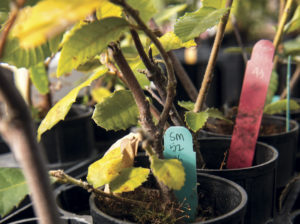Although solidly rooted in California’s natural and cultural history, our native oaks are disappearing at an alarming rate. The loss of these magnificent trees to urbanization and Sudden Oak Death has been widely publicized, but there is another threat that is only now getting some needed attention. “Several oak species are not regenerating in portions of their range,” reports the state Oak Woodlands Conservation Program. Simply put, “young trees are not replacing older trees.” While the contributing factors may be traced back to the arrival of the Europeans, we are just beginning to understand the complexity and gravity of the problem. “The poor success rate of new oaks is a serious problem throughout California’s millions of acres of oak woodlands,” says Ralph Kraetsch of the Walnut Creek Open Space Foundation. He attributes the lack of natural oak regeneration in the foothills of Mount Diablo to decades of “missing oak seedlings and saplings, possibly from extensive cattle grazing.” With hopes of solving the problem locally, Kraetsch and dozens of volunteers head to the preserved open spaces of Shell Ridge and Lime Ridge, on the outskirts of Walnut Creek and Concord, to collect ripe green acorns in September for planting in late November. Since 1991, volunteers have planted 300 sites per year, with a 30 percent success rate. To volunteer, write to contact@wcosf.org, call Kraetsch at (925)939-6610, or visit www.wcosf.org for more information.
.jpg)
Botany




